Radish variety Zhara
Heat is an old early-ripening radish. Received by employees of the Vitenskaya Experimental Station of Horticulture and Vegetable Growing named after V. IV Michurin of the Lithuanian Research Institute of Agriculture. Introduced into the state register of the Russian Federation in 1956. Approved for cultivation throughout Russia. Suitable for growing in open and protected ground.
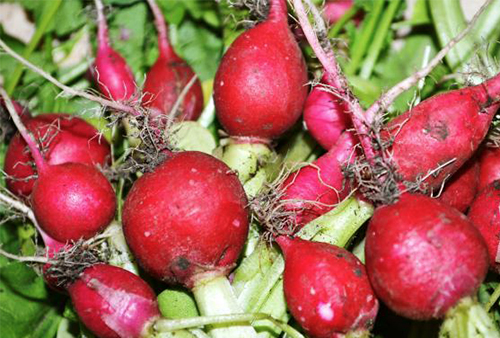
The period from germination to harvest is only 18 - 20 days.
Root crops of radish Heat are smooth, round and round-oval in shape, medium size, weighing 17 - 25 grams. The skin is smooth, thin (0.5 mm thick), red-raspberry color. The pulp is firm, tender and juicy, white or white-pink.
The leaf rosette is spreading, loose, includes 5 - 7 leaves. Leaves are grayish green. Leaf petioles with anthocyanin bloom. The weight of the leaves is 23 - 26% of the weight of the whole plant. The root crop is immersed in the ground by 2/3 and is easily pulled out.
Productivity 2 - 2.8 kg / sq. meter. Marketability when grown in greenhouses reaches 98%, in the open field due to the defeat of a cabbage fly - 37 - 39%.
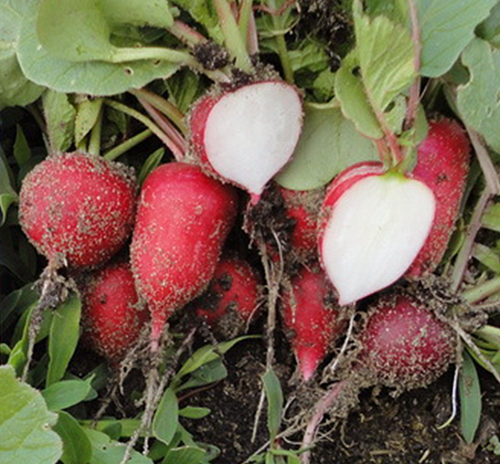
A variety for table use, with a medium-spicy slightly sweetish taste. The chemical composition of root crops is as follows: dry matter 5 - 6%, sugars - 1.4%, ascorbic acid 21 - 29 mg / 100 g.
Radish Zhara is characterized by high productivity, heat and cold resistance, and can be used for cultivation in the Urals and Siberia.
Pros of the variety: early maturity, inexpensive seed material, high taste.
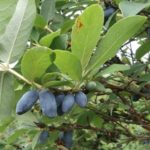
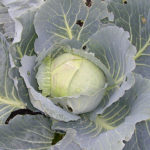

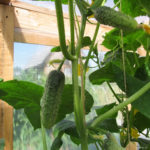

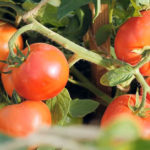



We tried to grow such a radish. Indeed, a very early variety. Although for some reason we did not get round root crops. For the most part, they were ovoid, with thick and very hairy long tails. Often the hairiness extended to the fetus itself. But, if all this is cleaned, the remarkably tender, with a little piquant pungency and bitterness, lettuce radishes on the table went off with a bang. But, if they did not have time to eat it in a week, voids formed inside the fruits, and the edges became woody-fibrous. But Heat is characterized by amicable ripening, especially with its early sowing under film. The plus is that it can be torn in a row, freeing the beds - the size of each radish is clearly visible, especially after watering, along the part protruding from the ground. That is, the conclusion is that Heat is better suited for sale. If you sow for yourself, then little by little, as it quickly loses its taste and gets old.
I love this radish very much for its juicy roots. The variety has a pleasant taste. It ripens very early. My beds are never complete without "Heat". As soon as the first sun warms up the earth, I plant it in the ground, and cover it with a film at night. It grows rather quickly, requires a lot of watering, so that bitterness does not appear in the taste.
The leaves of this variety are small, the fruits, in principle, are also small, but very dense, juicy, saturated. Perfect for salads and pure food. After the first root crop is ready for consumption, I plant another bed. By the time we eat the first one, the second ripens. And so on up to 4 times a summer. But during a period of extreme heat, it does not grow, since there is not enough moisture, and watering during the day burns it.
The name of the variety is fully consistent with the result. One of the few varieties. which grow well on the coming day. I have never seen the Heat go into the arrow. With proper watering - with settled water - the fruits grow round and very juicy, without bitterness. Suitable for sowing before winter. It grows on any soil, the main thing is not to overdo it with fertilizer, especially phosphorus-potassium.For early salads, only young, light green leaves are suitable, the old ones are covered with "thorns" and become tough. It is poorly stored, so I do not recommend sowing heat in large quantities, only on the basis of how much you can eat. Probably very good for sale though.
This radish really has a big, shaggy tail. The root vegetable is very tasty, not watery, slightly bitter. There are almost no empty ones, you just need to pull them in time. In a dry summer, it is imperative to water, and not in the afternoon, but in the evening, or early in the morning. When I rip a radish, I try to thin it out. The root crop looks out of the ground, and you can determine which one to pull out today, and leave the neighboring one for tomorrow. Radish Heat is the very first spring vegetable from which we make a salad, or simply eat it whole. We don't peel the peel, there are a lot of vitamins.
For a long time I didn’t manage to “make friends” with radishes. And with any kind, and with Heat too. Planted in April, May, and later. But the springs in the Ivanovo region are always so cold and uncomfortable that radishes fail. It sprouts quite well, but then its growth stops, it sits in the ground for a long time and finally stiffens or goes into the arrow. Now I sow only in the greenhouse, and even cover it on top with a film at first. Only under these conditions the radish develops normally, there is no delay in growth, and the yield is good. I like the taste, because it is not very spicy, pleasant. Of the shortcomings - not lying, even if stored in a plastic bag in the refrigerator.
I have been growing this variety for the second year. The radish is large and tasty. In our region, it does not ripen so quickly, in 30-35 days. In order for plants to grow faster, I spread freshly cut hay on the garden bed. Helps a lot. With this growing technology, I actually get three harvests per season. The only drawback is that this radish cannot be stored for a long time. Therefore, I try to tear it from the garden as needed (until the flower stem appears), and sow a new one in the vacant place. This way the process is not interrupted. The taste is beyond praise.